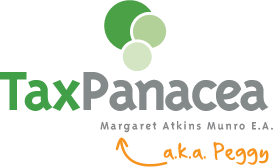The life cycle of so-called miracle drugs, like that of the butterfly, is relatively short but altogether fascinating. Pharmaceutical companies spend millions researching, patenting and testing new medications that promise sufferers lives free from prior medical constraints. Upon the Food and Drug Administration (FDA) approval of a new panacea, these corporations spend additional millions marketing the drug to doctors, hospitals and the general public, and then rake in billions on prescription sales.
The often illusory bright light in the distance for the consumers of these drugs is the day when the patent protection expires, and their prescriptions become available in generic form at a reduced price. The reality is that, all too often, the FDA pulls drugs from the market for safety concerns, often right around their patents’ expiration date. Drug companies, however, are tireless developers of new and improved cures, frequently altering or modifying prior formulations to create new, patentable pharmaceuticals.
One life ends, and a new one begins but, it would appear, something is rotten in the state of the pharmaceuticals industry.
As a lifelong asthma sufferer, I am one of the fortunate unfortunates bound by the promises made, and then yanked away, of new drugs that will prevent wheezing. I am a captive of the pharmaceutical industry as surely as if I wear shackles; I rely on these medications for my quality of life, although, even with insurance, they strain my wallet.
Imagine my excitement, then, when I recently read that the patents on two of my daily prescription medications are due to expire soon. Both drugs are under scrutiny by the FDA to evaluate risk versus benefit. If the FDA runs true to form, these will shortly be withdrawn from the market, only to be replaced by something quite similar, but altered enough to require new patents. And, once again, I will be hostage to the choice of either breathing freely or paying my other monthly bills.
I am not normally a conspiracy theorist, but my life to date has been marked by so many drugs approved, and then withdrawn, that it’s difficult not to subscribe. Over the years, I, and members of my extended family, have been manipulated over and over by the manufacturers of Seldane, Hismanal, Seravent, Intal, Vioxx, and Propulsid, among others. One particular example close to home is the bronchodilator albuterol, which I have used for decades for emergency relief. This medication had been sold generically for many years but was recently withdrawn and replaced by a new, repatented formulation which substituted the chlorofluorocarbons (CFCs) with a less environmentally hazardous propellant. CFCs’ ozone-depleting characteristics have been known since the late 1970s, but no one thought to remove them from a popular (and cheap) medication until thirty years later, in 2008. The replacement medication has two notable differences: it costs me three times as much to purchase, and it provides me with significantly less relief. The basic medication, however, remains the same.
 How strangely convenient that, again and again, just as my medication become affordable, they also frequently become unavailable. I have been victimized by this trend multiple times, supposedly to protect my health; no one, however, has ever bothered to ask my opinion as to whether I would be willing to assume some risk in exchange for the benefits I receive.
How strangely convenient that, again and again, just as my medication become affordable, they also frequently become unavailable. I have been victimized by this trend multiple times, supposedly to protect my health; no one, however, has ever bothered to ask my opinion as to whether I would be willing to assume some risk in exchange for the benefits I receive.
This is an important distinction, since historically, almost all the treatments withdrawn, which carry clearly-stated risks, are for chronic illnesses and conditions. Whether for arthritis, asthma, depression, diabetes, heart disease, high-cholesterol, or pain management, the medications that come and then go are principally geared towards constant and repeat customers. Their next-generation replacements succeed only in replacing one set of potential side effects with another, and extending the time that consumers must pay the high price of patent protection.
The symbiotic and parasitic relationship between the pharmaceutical industry and the FDA has been thoroughly documented, and just as thoroughly buried. Among the complaints are that the FDA allows the drug companies to run their own drug trials, but makes the process unnecessarily cumbersome and costly. In addition, the FDA requires that drugs already approved in other countries be retested prior to marketing here, causing vast and unnecessary duplication of effort and cost.
These excesses and conflicts would be forgivable if the FDA had infallible results, ensuring public safety. But the process is highly flawed, and the hit parade of drugs approved, and then withdrawn, is long. The public’s mistrust is further compounded when we see FDA officials gravitating to employment in large pharmaceutical firms, and hear reports of testing data being altered or ignored in order to bring a drug to market.
I would like to believe that the FDA prevents public exposure to dangerous drugs; unfortunately, I cannot. The agency’s history over the last 40 years can only lead one to believe that the public’s health is not its first priority. Sadly, it appears that its primary concern is the bottom line of the pharmaceutical industry it is charged with regulating.
